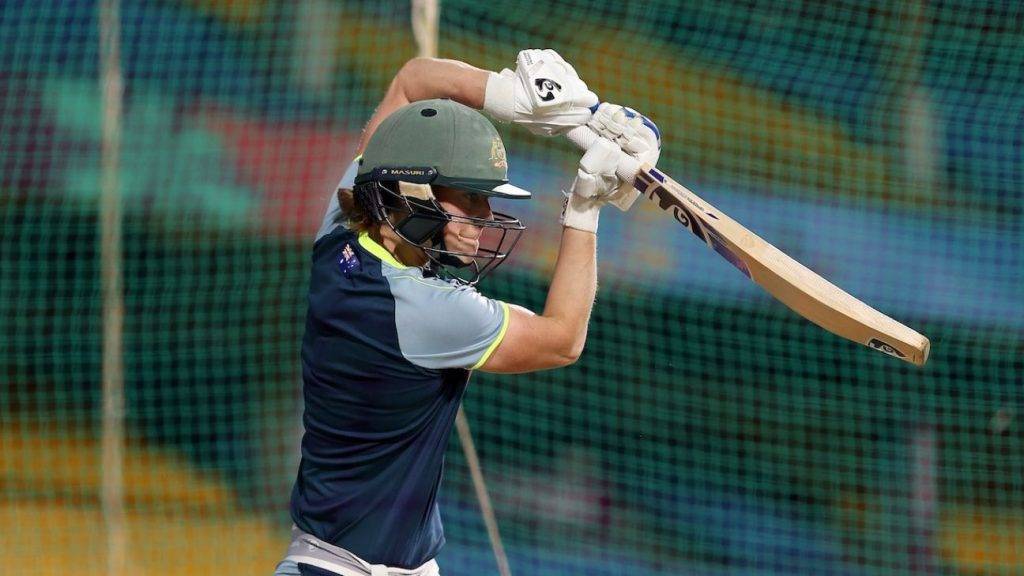Cliff Notes – Ellyse Perry and Sidra Amin highlight the contrasts in Australia and Pakistan
- Sidra Amin emphasised Pakistan’s familiarity with the Colombo wicket, contrasting it with Australia’s lack of experience on the surface, while acknowledging Australia’s superior game assessment skills.
- Ellyse Perry pointed to Australia’s robust domestic structure and competitive environment as key factors in their cricketing success, highlighting the importance of adaptability in challenging conditions.
Ellyse Perry and Sidra Amin highlight the contrasts in Australia and Pakistan
“We have an edge on this wicket. We’ve played two games here. Australia has not played any. But they have a lot of experienced players who have played cricket in most countries. The way they assess the game is better.” It was a pretty telling statement from Sidra Amin, ahead of Pakistan’s World Cup clash against Australia – an opponent they’ve never beaten before.
While Pakistan have lost both matches they’ve played in Colombo, to Bangladesh and India, the prevailing school of thought is that the slowish conditions – ones that Australia are yet to experience at this tournament – might help bridge the gap between the two teams. But only slightly.
“They have played all over the world. They know the conditions better,” Amin said. “They play the WBBLs and the Hundreds, and come and play in Asian conditions as well. They take preparation very seriously. I’ve heard they prepare for Asian conditions with indoor sessions with the temperature up to 35-40 degrees [Celsius]. So they can train that way as well.”
Editor’s Picks
While women’s cricket has grown dramatically over the past few years, it’s grown faster for some than others. This discrepancy, in part, stems from the calibre of competition each side gets to face.
In the three and a half years since the 2022 World Cup, Australia have actually played two fewer ODIs than Pakistan – 32 compared to 34. However, of those 32 games, 15 have come against India and England – among the tougher challenges in world cricket. Pakistan have played only four games against those two – seven if you include Australia themselves.
Ellyse Perry has a hit in the nets ICC/Getty Images
Beyond this, once you dive into the importance of a strong domestic structure, you begin to see clearly how Australia have evolved over the years. A point not lost on Ellyse Perry who, having debuted in 2007, has been part of two ODI World Cup-winning sides and has seen first-hand the fruits of investing in the women’s game.
“I think we’re incredibly lucky,” she said. “We’ve got wonderful support back home in terms of the programmes that we’ve got. We’ve got a full-time domestic structure that breeds great depth in Australian cricket. We’re a cricket nation too that loves playing the game. So we’ve always, throughout history, had wonderful players.
“And I think as a group, we love the challenge of continuing to find new ways to get better. You know, there’s so much competition in the global landscape now. I think all the advent of the franchise leagues around the world has just grown the depth of women’s cricket.”
In that context, the confidence that Perry gave off when analysing how an aggressive batting unit such as Australia’s would play on a not-so-batting-friendly surface like the one in Colombo was unsurprising.
“I think we have a conversation with our batting group, which we’re quite fortunate to have some depth in. So for us, and it’s something that we’ve discussed a lot over the last 12 months, is how we use that depth. It’s never going to be everyone’s day on the same day. Quite possibly it might just be one person’s day.
“But I think we all go out with the same approach, and that’s to be really positive, but also really adaptable and smart to whatever the game’s presenting, whether that’s conditions or the opposition. I think there’s a blueprint there that applies to anywhere that you play, and then you’ve just got to be adaptable all day.”






